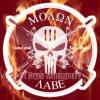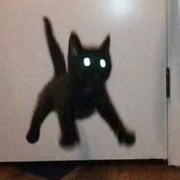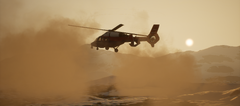- 20 replies
- 6,717 views
- Add Reply
- 0 replies
- 2,964 views
- Add Reply
- 0 replies
- 2,723 views
- Add Reply
- 1 reply
- 2,131 views
- Add Reply
- 3 replies
- 2,129 views
- Add Reply
- 0 replies
- 4,741 views
- Add Reply
Return of the Commodore 64

By Fubar512,
The Commodore 64 is back, and even boasts the same price it had...in 1982! http://latimesblogs.latimes.com/technology/2011/04/commodore-64-is-back-with-hdmi-out-intel-atom-chip-blu-ray.html?utm_source=feedburner&utm_medium=feed&utm_campaign=Feed%3A+TheTechnologyBlog+%28Los+Angeles+Times+Technology+Blog%29]LINK
Some details on Rise of Flights new career mode

By Dagger,


Some details about the new Сareer Mode
Dear pilots,
We would like to give you some details about our new Career Mode that we have been working on so diligently over the past several months. This has been one of the most complex and challenging features we have every made. Below you will find a tentative list of the features it should include when released. To be honest, this has taken longer than expected, but we also added some more items that we knew the community wanted t
Rise of Flight 1.018 Released

By Dagger,
777 Studios has released their latest update for Rise of Flight, here is what is new and the fixed with it.
Dear Rise of Flight customers!
Rise of Flight team have completed development of the new version of the project - 1.018. This version contains two major features: German multipurpose plane DFW C.V is now available for player controlling, night time graphics was changed to provide more realism in night sorties. Plus, this version is also contains several different changes whi
News from Rise of Flight

By Dagger,


So, for the implementation of Photo Reconnaissance flights or missions involving the Correction of Artillery you'll need some new equipment. This means a Camera and an Airborne Telegraph. As it often happens, it’s the little details that set ROF apart and we know you could not live without them so we have decided to work hard on these new elements. As always, we decided to try and not deviate from the principles of high detail and maximum accuracy in the reproduction of these new m
Dyess installs last B-1 LCTP upgrade

By Fates,


DYESS AIR FORCE BASE, Texas - A sniper advanced targeting pod connects to the under carriage of a B-1 Bomber Feb. 24 in the Three Bay Hanger here. The sniper pod is a long-range precision targeting system that supports the precision strike mission by providing positive target identification, autonomous tracking, coordinate generation and precise weapons guidance from extended standoff ranges supporting air-to-ground operations. (U.S. Air Force photo/ Airman 1st Class Courtney Moses)
http:/
Rise of Flight New Career mode update

By Dagger,


It just keeps getting better and better Here's some more news from the Rise of Flight folks
Dear pilots,
We would like to give you some details about our new Career Mode that we have been working on so diligentlyover the past several months. This has been one of the most complex and challenging features we have every made.Below you will find a tentative list of the features it should include when released. To be honest, this has takenlonger than expected, but we also added some mor






